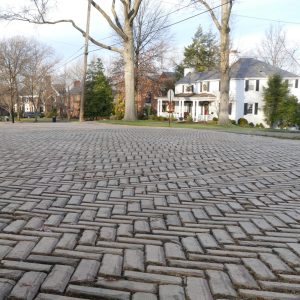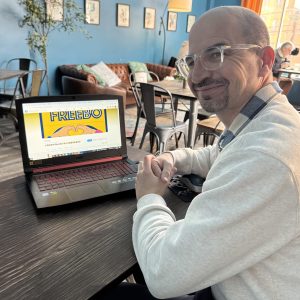Medals from all Seven Continents

My seventh continent! After two years of cancelled marathons, including Tokyo in March 2020 a week before I was supposed to leave and Bhutan in 2021, I finally achieved my goal in Israel at the Jerusalem Marathon in March 2022. Initially, I did not realize Israel was considered part of Asia. With their high COVID-19 vaccination and booster rates, it was the most likely place on this continent to have an in-person marathon in early 2022.
My friend, Brannon, whom I met on my trip to Antarctica, and I spent our first morning in Tel Aviv, running along the gorgeous beach on the Mediterranean Sea.

Later, we visited Old Jaffe, one of the oldest ports in the world and walked past the rocks where Andromeda, King Jaffe’s daughter, was tied as a sacrifice to allay Poseidon’s anger, since he threatened to devastate the city, according to Greek mythology. Another highlight of Tel Aviv included the magnificent markets with luscious, colorful fruit, gorgeous pastries and exotic spices, including hyssop, a green spice that is often sprinkled on bread.
I enjoyed the Israeli breakfasts with hummus, fresh cucumber and tomatoes. The shawarma and falafel also were delicious. Tel Aviv was a cool mix of history, Greek mythology, religious tradition, modern buildings and stray cats.

After a couple days there, we drove about 1.5 hours to Israel’s capital, Jerusalem, and arrived at the Mount of Olives where we took in the beautiful panoramic view of the walled city of Old Jerusalem. The Dome of the Rock’s golden roof stands out in this ancient city and is an Islamic shrine on the Temple Mount. I learned that Old Jerusalem had a Muslim section, a Jewish section and a Christian section. On our walk from the Mount of Olives to Old Jerusalem, we visited the Greek Orthodox Church of Mary’s sepulcher and spent the day walking to the 14 stations of the cross, ending at the Church of the Holy Sepulcher where Jesus is said to have been buried in a cave. We walked past the Tower of David and visited the Western (Wailing) Wall, where I entered a few thoughts and hopes on a piece of paper and buried it in one of the cracks in the wall.

The most poignant part of the trip for me was visiting Yad Vashem—the World Holocaust Remembrance Center. Learning more about the horrific history and visiting the various memorials such as the Hall of Remembrance where 22 Nazi murder sites were sketched on the floor with a memorial flame next to a crypt of victims’ ashes from the extermination camps and the memorial to the 1.5 million children murdered during the Holocaust were moving and heartbreaking. Going inside the children’s memorial was dark and frightening with broken shards of glass in the walls, which was the only source of light, exemplifying how terrified the children must have felt.

One of the highlights of my trip was a day in Bethlehem, which is in the West Bank of Palestine. Israeli citizens are forbidden to enter the walled-in city, unless they are a tour guide. However, we were required to have a Palestinian tour guide while in the boundaries of Bethlehem. Our tour bus went through a security gate to enter and leave. Our first stop was the Church of the Nativity, which consists of three denominations—Greek Orthodox, Roman Catholic and Armenian Apostolic. Three different crosses are represented outside on the roof. We entered through a low door, forcing us to duck, called the Door of Humility, which opens to the Greek Orthodox part of the church.
The ornate iconostasis—the wall of icons in the front of the church separates where ordinary people can stand from where only the high priest is allowed behind the wall—captured my attention first when I entered. We saw the original mosaic floor dating back to the sixth century and graffiti on the columns dating back that far. To the right of the Greek vestibule, are a set of half round stone stairs going underneath the sanctuary where tradition says that Jesus was born. The location is called the nativity grotto and is adorned by a silver star.
Growing up, I was taught that Jesus was born in a stable because there was no room at the inn. Manger scenes depict a wooden structure with hay and animals. However, our guide told us that more than 2,000 years ago, families lived in caves and their animals typically lived in separate caves, which is much different than what we have been led to believe. I touched the original floor where Jesus was said to be born. Directly across is the site of the manger, which our guide explained was the trough used to feed the animals. The trough where Jesus was born was said to be taken by the Romans.

One silver lining of visiting after COVID lockdowns was that it was not crowded. Tourists have waited for several hours to go down those steps, and it is especially busy during religious holidays. Before we exited the gates of Bethlehem, we visited Shepherds’ Field, where it is believed the angels announced the birth of Jesus. The small chapel had a beautiful dome ceiling and incredible acoustics. Afterwards, we returned to Jerusalem to quickly tour the Israel Museum, where the Dead Sea Scrolls are housed, and then back to our hotel to get ready for the pre-race pasta dinner.
Marathon day started at 4 a.m., which was technically 3 a.m. since it was daylight savings time in Israel. Fortunately, we took the Marathon Tours bus on our way to the start line on this cold, rainy and windy morning. When I visited the Western (Wailing) Wall of Old Jerusalem, one of my wishes was to have good weather (i.e., no rain) for the marathon. We were fortunate to wait on a warm, dry bus until just a few minutes before the marathon started. The rain lightened for the start of the race, and the sun came out for a little bit. Just as I was thinking my wish was granted in my note in the wall, the wind picked up, the temperature dropped about 10 degrees and the rain started to pour. I wore a bright yellow poncho the entire race, and all I heard was plastic rustling in the wind for 26.2 miles (or 26.89 in my case).

We were warned the marathon was hilly, but I looked at the elevation map in meters and did not take the time to convert it to feet. Our hotel was on the racecourse and the signs for the marathon were up early. Prior to the race, we drove up many hills of the course on the bus, which felt long just driving. Fortunately, I am a trail runner from Pittsburgh, so while they were daunting, it could have been much worse, like it was for my friend, Brannon, from flat Houston. As I was running up the last hill (yes it ended on an uphill after 2,247 feet of elevation gain), I still could not believe I was about to cross the finish line of my seventh continent. Approximately 700 people ran the full marathon and 3,000 ran the half marathon.
That evening, our tour group, many of whom won age group awards, went to dinner to celebrate our accomplishments. I was thrilled to receive my seven continents medal after starting this journey in 2013. Based on the Marathon Tours Seven Continents Club website, I believe I was the 860th person and the 294th woman in the world to complete a full marathon on all seven continents.

The next day, we drove south to Masada, King Herod’s fortress, near the Dead Sea. He had an elaborate but efficient water system for cooking, bathing and drinking. The Romans came to conquer the Jews, but rather than being captured to become slaves, they devised a plan to kill one another with the last person committing suicide. While Jewish tradition frowns upon suicide, the case was forgiven due to the circumstances that involved their freedom. Two women and five children survived. The history and fortress were fascinating.
Again, it was hard to wrap my head around the ancient mosaic tiles and stones that dated back to A.D. 66. After Masada, we drove to the Verdi hotel for a lavish lunch and then to float in the Dead Sea. I learned that it has 33.7 percent salinity, which makes it easy for us to float. It was a welcome 70 degrees and sunny, but the water temperature felt much cooler. The Dead Sea is actually a massive lake, approximately 31 miles long, nine miles wide at its widest point, and 997 feet deep, making it the world’s deepest hypersaline lake. Additionally, it is the lowest point on earth at 1400 feet below sea level. The shore and bottom of the sea are sharp due to the salt residue that builds up. Seeing Jordan across the other side of the Dead Sea, while floating, and taking in the events of the whole week made for an extraordinary and lasting memory.
As with all my trips around the world, meeting new friends with similar goals of running and traveling is always the best part. Many of our new friends ran the London Marathon last October, so I enjoyed reuniting with them.
While COVID-19 cancelled two marathons in my quest to run the seven continents, I was thrilled to finish in Israel. This was not a place at the top of my list to visit, but the history, beauty and experience surpassed my expectations.





